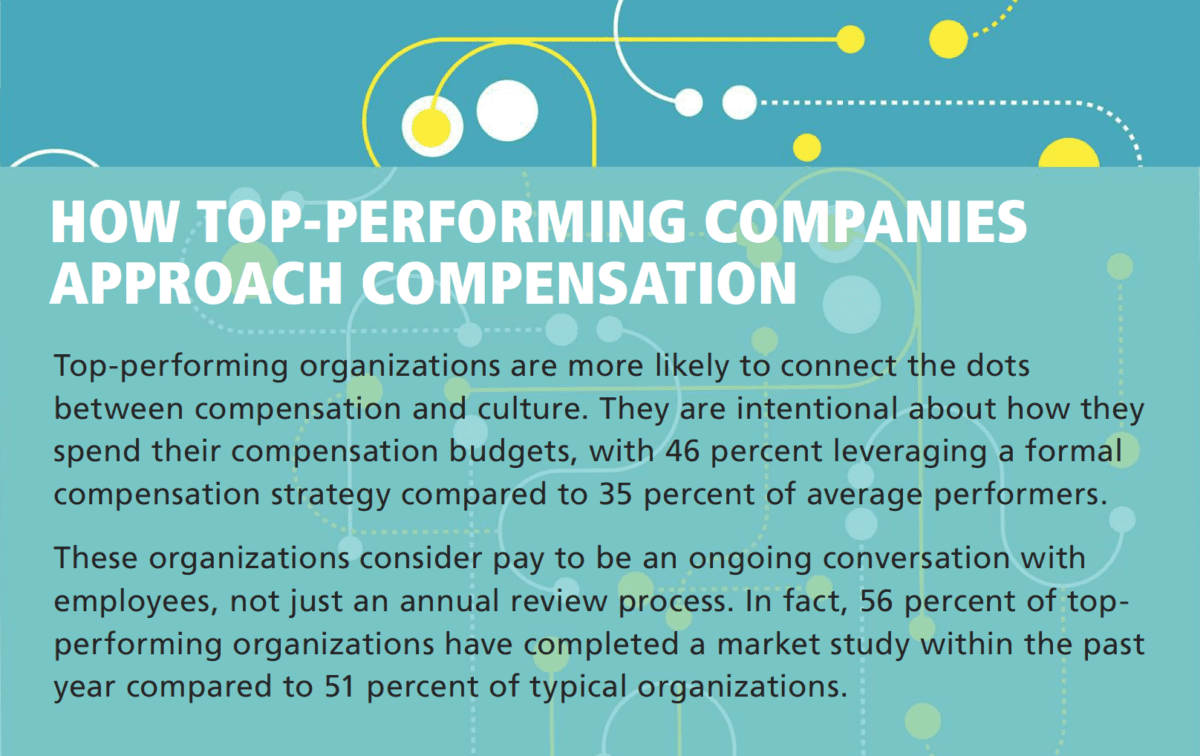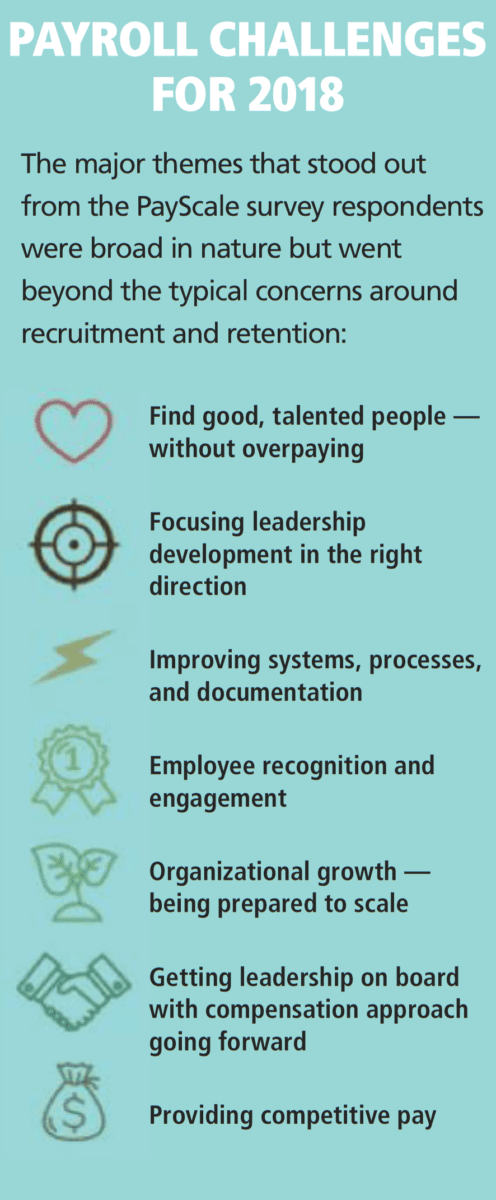In order to remain competitive, organizations need to build strategy around their pay practices.
By Wendy Brown
2017 was a year of transformation for compensation practices. More and more states banned the salary history question, pay equity laws became more prevalent, and major tax reform bills threw payroll into disarray. With the unemployment rate at historic lows, employees gained many more options when it came to employment opportunities.
And now, in order to attract and retain the best talent, organizations have turned their attention to cultivating a top-notch employee experience that they can really brag about. The challenge they all face? A well-executed employee experience relies heavily on three things that managers need to do:
- coach and train employees;
- effectively share sensitive information about compensation and performance; and
- recognize employees for their contributions.
But do organizations provide managers with the training, resources, and opportunities needed to be able to successfully deliver a desirable employee experience? PayScale surveyed more than 7,000 organizations to find this out as well as to better understand the relationship between pay practices and business results. The survey found:
1. There is a crisis of confidence. An impressive 85 percent of managers have confidence in their ability to explain the rationale behind pay decisions to employees, but only 37 percent of organizations share that confidence in their managers.
2. Salary increases remain stagnant. Fifty-nine percent of organizations report employee retention as a major concern for 2018, which is a slight increase from 56 percent in 2017. Perhaps this is encouraging raises: 84 percent of organizations plan to give base pay increases in 2018. But the survey found that the average increase will remain similar to last year, with 73 percent of employers estimating an average increase of three percent or less. Employees in competitive jobs or those who are outperforming their peers may be commanding much more in compensation. Excluding promotions, the highest base pay increase given to an employee was greater than 10 percent for 40 percent of organizations, with 13 percent of organizations giving a pay increase of 20 percent or higher.
3. The market is ever-changing. More than half of organizations (52 percent) have completed a full market study within the past year, and 17 percent price individual jobs in the market at least weekly, up from 13 percent in last year’s survey.
4. Organizations are counting on variable pay to hire and retain employees. Seventy-one percent of organizations offer variable pay such as bonuses and commissions. The survey showed a distinction between types. The number of organizations offering spot bonuses decreased year-over-year from 46 percent in 2017 to 39 percent in 2018. Individual incentives increased from 64 percent to 67 percent, and hiring bonuses did too, from 27 percent to 34 percent. In addition, employee referral bonuses are gaining popularity with 39 percent of organizations offering them. Company-wide incentives are also gaining momentum with 30 percent offering organization-wide bonuses, and 22 percent offering profit sharing.
5. Pay equity is top of the mind, but not on top of the to-do list for 2018. Top-performing organizations are more likely to report that they’re actively addressing workplace inequities than typical organizations. This is true across gender (35 percent versus 26 percent); race and ethnicity (28 percent versus 23 percent); and other protected classes (27 percent versus 21 percent). That said, 63 percent of top-performing organizations have no plans to conduct a race or gender pay equity analysis in 2018, compared to 66 percent of average performers.
2018 Outlook
In many ways, compensation in 2018 will look very much like 2017, with 84 percent of organizations planning to give increases. While 25 percent of companies averaged three percent raises in 2017, 30 percent predict that they will give an average raise of three percent in 2018. The numbers also show that the majority of organizations predict that their bonus or incentive budgets will not change in 2018.
In order to stand out, organizations need to focus on their pay brand. Pay brand is the way existing and future employees feel about the compensation and rewards at an organization. Its backbone is the organizational compensation strategy and it is not only shaped by the way an organization pays -including how much and why -but also by how they talk about pay with employees.
Organizations should be clear and transparent about the reasons that lead to a particular compensation structure plan. To attract future employees, retain current employees, and stand out among competitors, HR needs to ensure that the pay brand is crafted with intention and err on the side of over-communication with employees about these topics.
Wendy Brown is director of content marketing at PayScale.
















